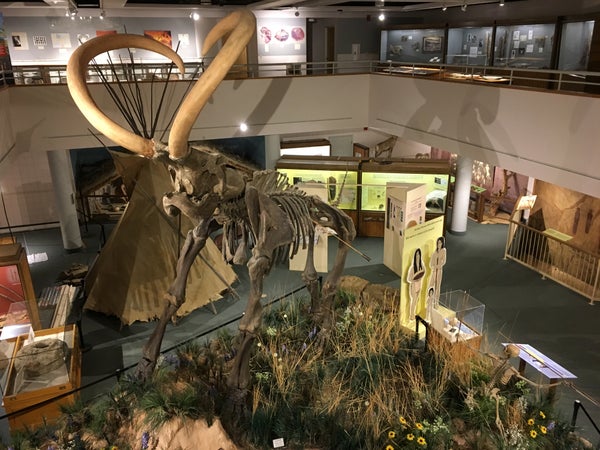This article was published in Scientific American’s former blog network and reflects the views of the author, not necessarily those of Scientific American
Sometimes paleontologists uncover ghosts.
I don’t mean the spirits of Brontosaurus that I imagined in the gloomy museum halls of my childhood or spectral Smilodon enlivening old bones. I mean ghost tracks, footprints that are all-but-undetectable with the naked eye but can still be discerned with other techniques. And by utilizing 3-D radar imaging, Thomas Urban and colleagues have opened a brief window to an ancient crossing-of-paths.
The trace fossils in question were found in White Sands National Monument, New Mexico. Along with an active missile range, this national park also contains the remnants of environments around the vanished Lake Otero that preserve the tracks of both humans and megafauna. Just last year some of the same authors described interactions between Pleistocene people and giant ground sloths, an unexpected example of Ice Age mammals and humans reacting to each other. Now, in an assessment of the park’s ghost tracks, they’ve revealed a previously-invisible trace fossil record.
On supporting science journalism
If you're enjoying this article, consider supporting our award-winning journalism by subscribing. By purchasing a subscription you are helping to ensure the future of impactful stories about the discoveries and ideas shaping our world today.
White Sands is a difficult place to track Ice Age life. The tracks here can be quickly exposed or covered by blowing sand, and exposed traces can quickly erode. But by using ground-penetrating radar, the researchers were able to detect and create images of footprints that are otherwise hidden. In this case, Urban and coauthors ran a GPR survey along a trackway made by at least one human, crossed by a mammoth going in a perpendicular direction.
One set of human tracks goes to the north. The way the mammoth tracks deformed the surrounding sediment as the beast walked indicates that the Ice Age elephant walked west after the human went by. But there’s a second set of human prints going to the south, one of which was pressed into a mammoth track. This person, perhaps the same person, walked in the mammoth track while going south. There’s no way to tell how much time these crossings represent, but the association of the traces allow us to more clearly envision a few moments of Ice Age time.
But the biggest point of the paper isn’t about these fleeting moments. It’s about the potential of ground-penetrating radar for studying ancient footprints. When paleontologists are asked “Do you ever use ground-penetrating radar like in Jurassic Park?”, the answer is almost always “No.” The technique isn’t very good at distinguishing fossil bone from rock. But the technology fares far better at picking up the infill of some tracks, which is different than the surrounding sediment, and the compression of layers beneath the footfalls of heavier animals like mammoths.
The upshot is that researchers may be able to go back to classic tracksites and detect more footprints than ever before, using GPR to look for the telltale signs of footprints. More than that, the modeling techniques used in the analysis may offer new information relevant to the speed and mass of extinct animals, reading directly from the imprints they made. “At sites such as White Sands,” the researchers write, “a new data archive in the form of a rare and unique ichnological record is there to be unlocked.” There are lost worlds still out there awaiting discovery.
